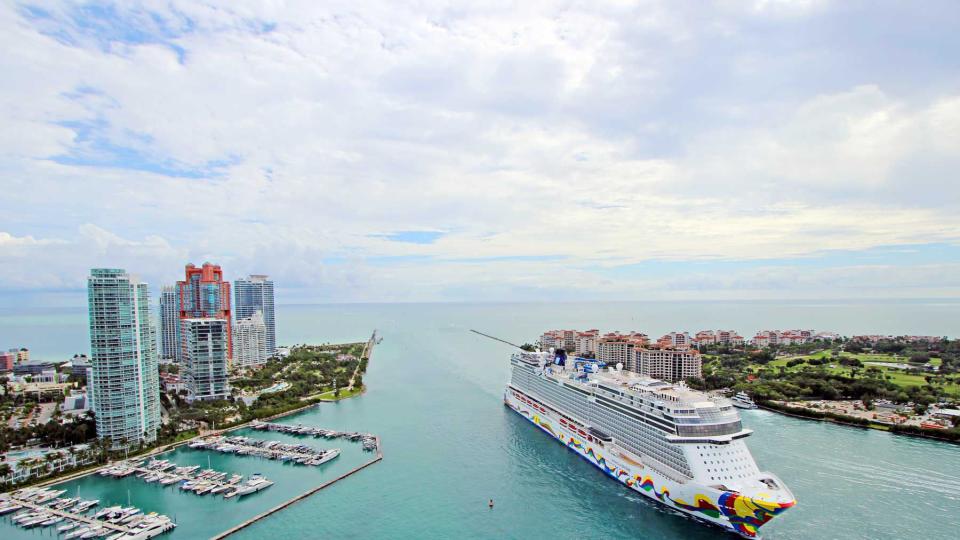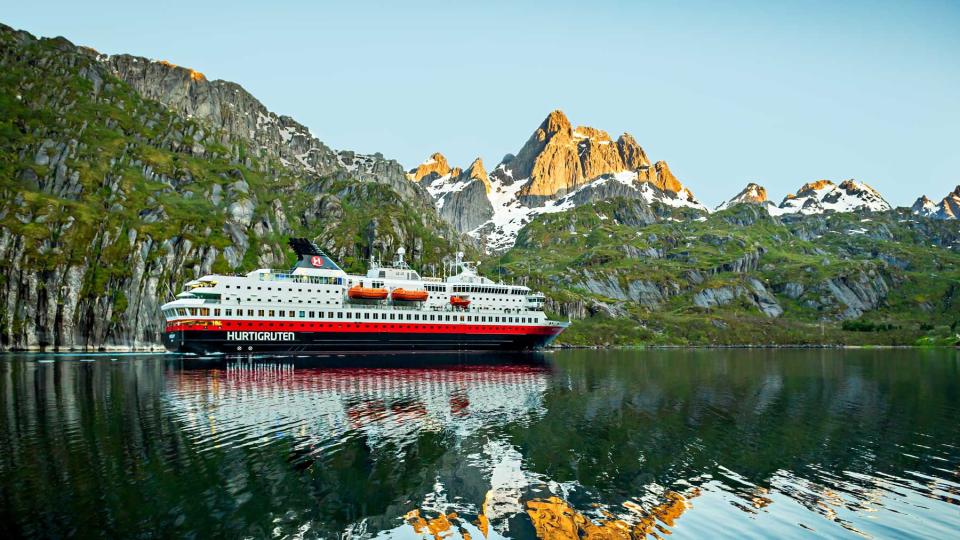How Cruise Lines Are Rethinking Pretty Much Everything

Big-name cruise companies have been on pause since mid-March, after they voluntarily ceased operations a day before the CDC issued a “No Sail Order” for any ships carrying more than 250 passengers. In the months since, smaller ocean and river lines have developed new pandemic-era health and safety guidelines aimed at restoring traveler confidence in cruising.
And travelers are interested, says Rob Clabbers, president of Q Cruise & Travel in Chicago and a member of T+L’s Travel Advisory Board. “We have some clients who literally can’t wait to get back on a ship,” he explains. When they do eventually board, vacationers will find a new routine — at least in the near term.
Norwegian Cruise Line is one of the largest operators to have announced new policies. They include touchless temperature checks when guests enter public spaces, reduced passenger capacity, and frequent reminders to wash hands. Group sizes for onboard activities will be smaller, to promote social distancing. Gone are self-serve buffets and pour-your-own coffee. And all ships will now have medical-grade H13 HEPA air filters, Norwegian says, which can eliminate 99.95 percent of airborne pathogens. (The line has also formed a health and safety panel, in partnership with Royal Caribbean Group, to study additional changes to improve on-board hygiene.)

Courtesy of Norwegian Cruise Line The Norwegian Encore sailing near South Beach and Fisher Island, in Miami.
Hurtigruten, which specializes in trips around Scandinavia and to the poles, resumed limited sailing in June. They added more crew members, including dedicated medical staff; lowered onboard capacity (by leaving some staterooms empty); and restricted access to ships’ saunas, swimming pools, and gyms. Yet plans to further expand service were put on hold earlier this month, when dozens of crew and guests aboard the MS Roald Amundsen tested positive for the coronavirus, as Travel + Leisure reported.

Trym Ivar Bergsmo/Courtesy of Hurtigruten Norway-based Hurtigruten sails to destinations like the Lofoten Islands, seen here.
Ponant, another expedition line, restarted cruises in Croatia, France, Iceland, and Tahiti in July. (One passenger on the Paul Gauguin in Tahiti tested positive for the virus.) The line says it is disinfecting all luggage, sanitizing high-touch areas every hour, and deep-cleaning the Zodiacs that ferry guests ashore. They’ll also mandate masks for crew and recommend them for all guests.
Closer to home, American Cruise Lines will reduce its capacity by 25 percent on itineraries traveling the Columbia and Snake rivers, the Mississippi, and the coast of New England. The small-ship line, which had planned to resume sailing in June but has pushed that date into the fall, aims to implement contactless check-in, sanitize touch points like doorknobs and railings hourly, and provide all guests and crew with personal protective equipment (PPE) including face shields, gloves, and masks, noting that PPE may be required “as situations dictate.”
While the extra efforts may take away some of the carefree verve of cruising, Clabbers says travelers will adapt. “It’s not ideal, but neither is taking your shoes off at airport security,” he notes. “It’s worth a little inconvenience to see the world.”
A version of this story first appeared in the September 2020 issue of Travel + Leisure under the headline How Cruise Lines Are Rethinking, Well, Everything.

